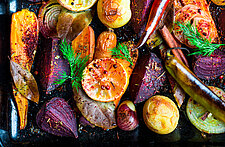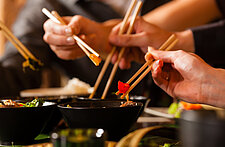By Kamila Gierut, Digital Marketing Associate
 In the past year or so, there has been an explosion in craft beverages, most notably, craft beer. According to Mintel, the craft share of the beer category has nearly doubled from 2010-2015, going from 5.2% to 10.2%. Consumers are willing to try new products now more than ever. They are interested in where their products are coming from, how they’re made, and most importantly, they're looking for premium elements. Another beverage category on the rise is craft spirits. Craft spirit launches increased 265% globally from 2011-2015, with 49% having been in the US. Due to both categories growing in popularity, it’s no surprise that we are starting to see cross category innovations. We’ve seen beertails (cocktails using beer as an ingredient), but we are now starting to see craft breweries brewing up beer made to taste like cocktails.
In the past year or so, there has been an explosion in craft beverages, most notably, craft beer. According to Mintel, the craft share of the beer category has nearly doubled from 2010-2015, going from 5.2% to 10.2%. Consumers are willing to try new products now more than ever. They are interested in where their products are coming from, how they’re made, and most importantly, they're looking for premium elements. Another beverage category on the rise is craft spirits. Craft spirit launches increased 265% globally from 2011-2015, with 49% having been in the US. Due to both categories growing in popularity, it’s no surprise that we are starting to see cross category innovations. We’ve seen beertails (cocktails using beer as an ingredient), but we are now starting to see craft breweries brewing up beer made to taste like cocktails.
Most of these cocktail inspired brews are born from collaborations between local breweries and local craft cocktail bars, or simply from the love of cocktails and their distinct flavors and ingredients. Jester King’s Jeffery Stuffing said, “I think brewers and bartenders have a lot in common and are compelled to explore each other’s respective crafts. Both pursuits are extensions of the culinary world and have the potential for crossover.” That’s exactly what we are seeing around the country in the craft beverage world.
CLICK HERE to see Symrise's 2016 Top Beer Flavor Trends.
So how do you brew a beer that resembles a classic cocktail and what kind of flavor notes and ingredients are being used in the process from end to finish? Some of the different cocktail inspired beers we are seeing on the market include:
- Pipeworks Brown & Stirred: Manhattan inspired. (They also make beers inspired by the Mojito, Dark and Storm and White Russian.)
- Wicked Weed's Coolcumber: cocktail inspired beer brewed with cucumbers, basil and juniper berries.
- Brooklyn Brewery's Improved Old Fashioned: inspired by one of the most popular classic 19th century cocktails… the old fashioned!
- Jester King & Bruery Terreux's Imperial Cabinet: inspired by a New Orleans classic cocktail invented in the 1880s called the Ramos Gin Fizz.
 So how do these breweries mimic the taste of these classic cocktails? Jester King (Austin, TX) teamed up with Bruery Terreux (Placentia, CA) to create Imperial Cabinet, which pays homage to the Ramos Gin Fizz. This classic cocktail contains gin, orange blossom water, an egg white, half and half/cream, lemon and lime juice, simple syrup and seltzer. The brewers over at Jester King did some research and by research I mean a whole lot of drinking, to figure out the right ingredients.
So how do these breweries mimic the taste of these classic cocktails? Jester King (Austin, TX) teamed up with Bruery Terreux (Placentia, CA) to create Imperial Cabinet, which pays homage to the Ramos Gin Fizz. This classic cocktail contains gin, orange blossom water, an egg white, half and half/cream, lemon and lime juice, simple syrup and seltzer. The brewers over at Jester King did some research and by research I mean a whole lot of drinking, to figure out the right ingredients.
CLICK HERE to Learn How to Position Your Brand in the Craft Artisanal Space
First, they knew they wanted a higher ABV content, ultimately, achieving an 8-9% ABV beer. The grist, which is simply the ground up malt and grains ready for mashing, is compiled of unmalted wheat and rolled oats, which mimics the creaminess of the Fizz. During the boil, a slew of ingredients were added: rosemary, lavender, juniper, cubeb peppers (all gin botanicals), and dried orange blossoms, which mimics the orange blossom water. When done, the beer is then transferred to oak barrels with yeast and bacteria for just short of a year. During the final weeks in the barrel, orange peel, lemon and lime zest and vanilla beans are added to bump up gin flavor characteristics. After 10 months in the barrel and some additional refermentation in the bottle, “Imperial Cabinet” was born, wisely named after the Imperial Cabinet Saloon, where the Ramos Gin Fizz was created in New Orleans. You can see that many ingredients and flavors used as gin botanicals can be added straight to the boil to steep and recreate flavors of gin, and the cocktail as a whole.
 Pipeworks Brewery (Chicago, IL) does their own rendition of a Manhattan called Brown & Stirred. The classic Manhattan has a straightforward and solid recipe: bourbon, angostura bitters, vermouth and a maraschino cherry to top it off. The beer starts out with corn and lots of rye malt, which is reminiscent of bourbon, especially in the initial aroma. At the end of the boil, the brewers add in lemon peel, cherry puree (a nod to the drink’s garnish) and a tea of bitter roots and baking spices to resemble the profile of Angostura bitters. The beer is then aged in Rittenhouse Rye barrels to raise the level of whiskey flavor. If you order this beer at a bar, be prepared to tell the bartender if you want it neat or served on the rocks, seriously. Coming in at about 10.5% ABV, it’s recommended to be sipped, just as you would a classic Manhattan.
Pipeworks Brewery (Chicago, IL) does their own rendition of a Manhattan called Brown & Stirred. The classic Manhattan has a straightforward and solid recipe: bourbon, angostura bitters, vermouth and a maraschino cherry to top it off. The beer starts out with corn and lots of rye malt, which is reminiscent of bourbon, especially in the initial aroma. At the end of the boil, the brewers add in lemon peel, cherry puree (a nod to the drink’s garnish) and a tea of bitter roots and baking spices to resemble the profile of Angostura bitters. The beer is then aged in Rittenhouse Rye barrels to raise the level of whiskey flavor. If you order this beer at a bar, be prepared to tell the bartender if you want it neat or served on the rocks, seriously. Coming in at about 10.5% ABV, it’s recommended to be sipped, just as you would a classic Manhattan.
To receive weekly food and beverage insights, CLICK HERE to receive our newsletter.
The flavors and ingredients added into the brewing process, from the mash to the boil and even barrel aging, can be tweaked to mimic just about anything, ranging from a cocktail to a culinary dish. Consumers, especially millennials, are thirsty for more craft beverages and are seeking out premium and uniquely flavored products to share with their friends. One thing is certain…the craft beverage industry is responding, launching new uncommon and out of the box craft beers and spirits every day.




